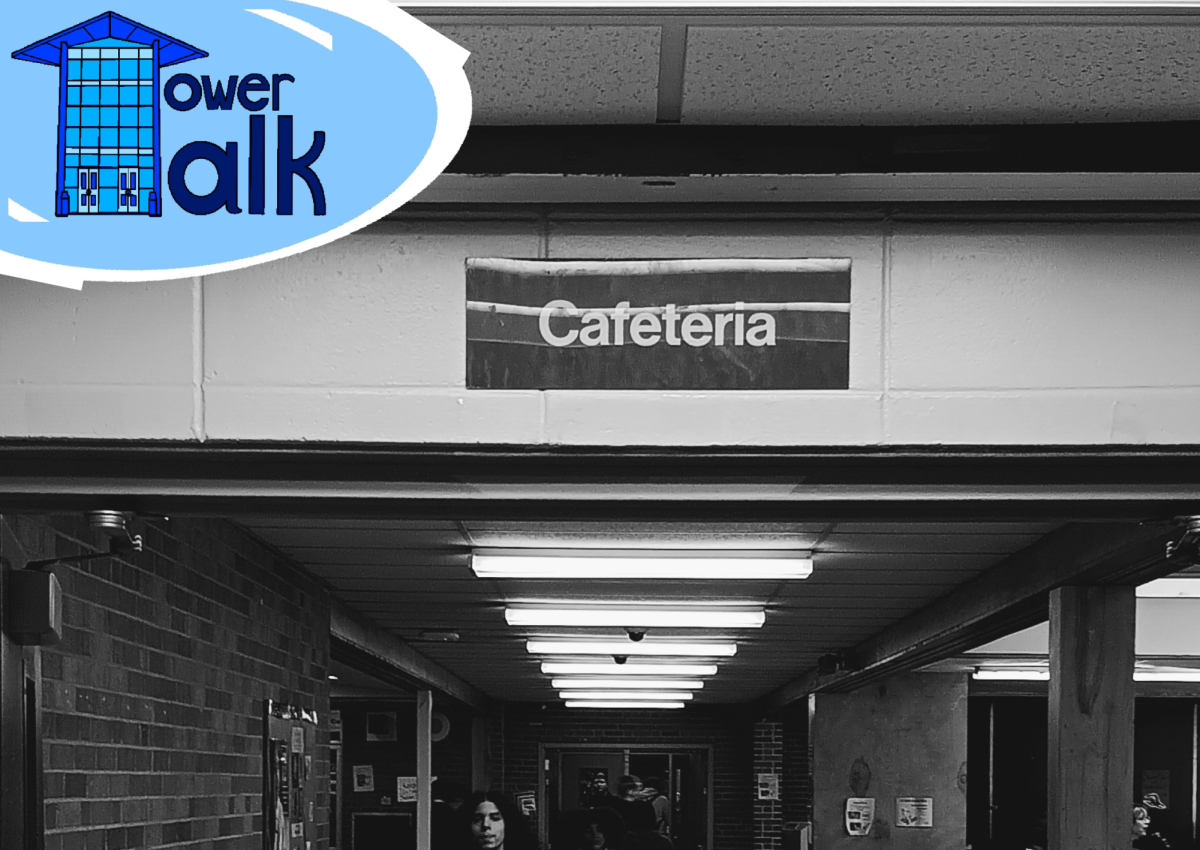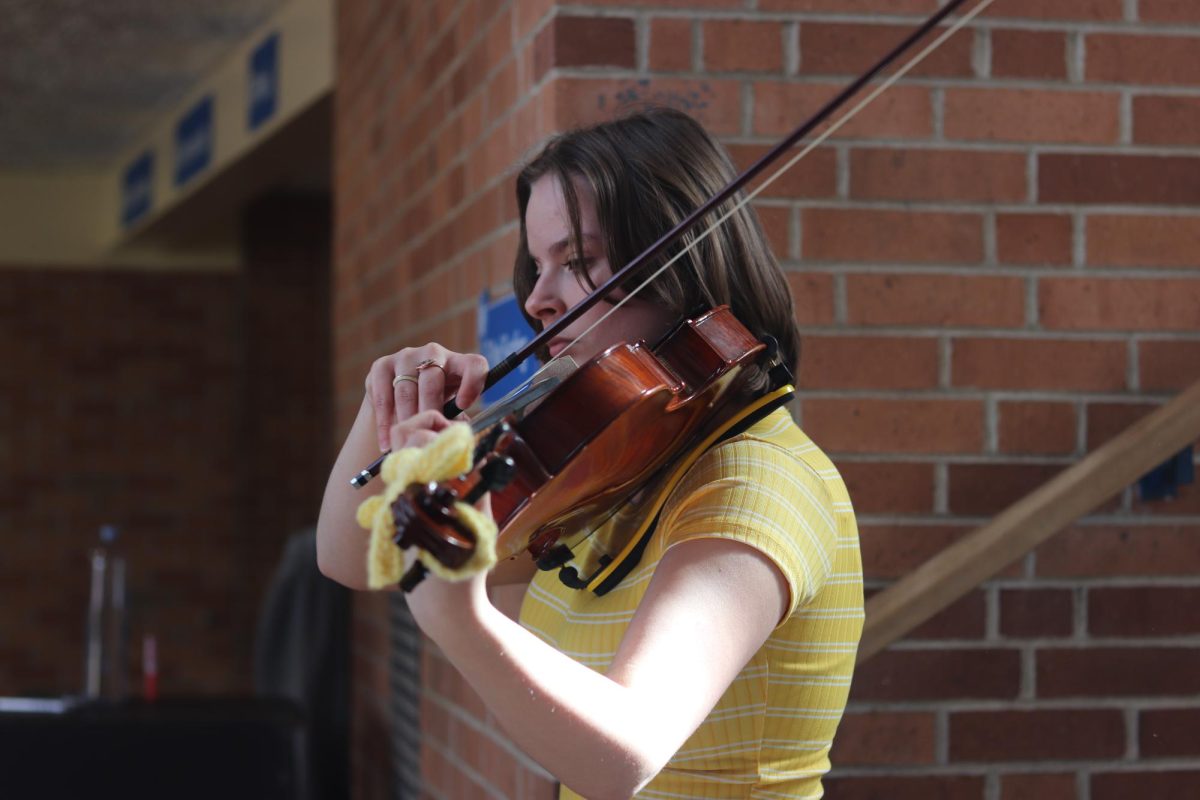
Carmela Gonzalez
works on her photocomposition project in her 4th hour journalism class. This is just one of the many projects that she has been working on throughout the week.
by Alana Whitehead
It’s the first day of school, and students are buzzing around, eager to catch up with friends after the short three month break. The bell rings signaling 5 minutes before class starts and Carmela Gonzalez is rushing about trying to locate her 1st hour class in this large new school. This is her first day of high school and she already can tell it’s going to be a different four years than her middle school years at Maple Street.
“I had trouble finding my classes,” Gonzalez said. Loy Norrix High School is known for its long twisting hallways and confusing wings, so it’s no surprise that a freshman coming from a smaller middle school had a hard time finding their classes.
Carmela Gonzalez is your typical high schooler. Meeting her for the first time you wouldn’t think there’s anything abnormal about her. She’s a small, quiet girl with a beautiful smile who enjoys photography and likes passing by her time outside in the nice weather. But once you get to know her and begin to talk about the subject of school you soon realize that this typical teenager is in fact struggling with a basic every day thing. School work. And she’s not alone.
Statistics show that about thirty percent of students report spending 2 or more hours on homework each day in the US.
After locating her classes Carmela had a surprise.
“The first day (of high school) we didn’t do much, but the rest of the first week we already had as much homework that we got assigned for two weeks in middle school,” Carmela said.
Gonzalez was deeply surprised that the work load was much heavier in high school compared to middle school.
According to guidelines endorsed by National Education Association, students should receive 10 minutes of homework each night according to their grade. For instance, an eighth grader should receive about 80 minutes of homework a night, where as a twelfth grader should receive about 120 minutes of homework in a single night. This is , of course, rarely the case.
However, the fact that there is too much homework assigned to students is not the only reason students are having a difficult time with school work.
“Homework that is based solely on textbooks and standardized classes offers no creativity to students which in turn fails to spark an interest on the subject and the entirety of the school system,” Lian Wardrop, a junior at Loy Norrix High School said, explaining how a lack of interest in school work also affects students performance in their school work.
Incoming high school freshmen are entering high school with no idea what to expect. Carmela signed up for classes with a light work load so she wouldn’t have too much work or stress placed on her shoulders for her first year of high school. But she says that even though she’s taking light work load classes, she is still receiving double the amount of work she received in eighth grade.
Coming from a middle school with 6 class periods to a high school with 5 class periods, Gonzalez was expecting there to be a lighter class load, not a heavier one. However, to her shock, she got a much heavier work load.
“The amount of class work and homework we get is a lot different,” Gonzalez explained. “We get two to three tests a week here [at Loy Norrix],” Gonzalez said, explaining how much heavier the work load is in high school, and how many tests she receives compared to the few she received in middle school.
“Work is due at a certain time,” Gonzalez explained, “or it’s not accepted.” Compared to middle school where guidelines on turning in assignments are much looser according to Gonzalez.
“We’re expected to do more,” Gonzalez said, explaining the new expectations placed on her upon entering high school. “There’s more pressure from all the work and teachers’ expectations of us are much higher. We have to have more of a sense of responsibility.”
The curriculum today is putting too much pressure on young students’ shoulders. The huge jump in the work load from 8th to 9th grade is too large for students to handle. They’re not used to the large amount of work and responsibility expected of them. And because of this it is beginning to put a strain on our children.
The increased stress and pressure placed on their young shoulders is taking a toll, and it’s showing itself in heart breaking statistics. According to national statistics 8.1 percent of all students will drop out of school. 36 percent of these students will drop out in ninth grade.
According to a National Longitudinal Study conducted by the U.S. Department of Education Statistics one of the key reasons why students in 8th-10th grade drop out of school is because they are having trouble with their classes, or failing school. This is almost 40 percent of students’ reasoning.
“I plan to go through all of high school,” Gonzalez said. “I believe this is important because I’d like to prove people wrong by telling them I will be able to pass high school. I will be able to graduate.”
If we prepare our students more while they are younger, if we balance the work load more for students, perhaps these statistics wouldn’t be as high. Perhaps more of our talented, unique students would graduate from high school.















